




| Sapalo Anibal Estevao Master of Economics Economics Angola |
Patricia Rosana Renaudo Astudillo Bachelor of Science Psychology Argentina |
Florence Yasmine Andrews Doctor of Develop ment Studies Development Studies Belize |
Dinla Henry Master of Accounting Accounting Cameroo n |
Kouatedzo Jean Paul Master of Logistics Logistics Cameroo n |
Idam, Christiana Ogboali Master of Social and Human Studies Humanitarian Studies Chad |
| Nereida Mosquera Delgado Bachelor of Science Psychology Chile |
Jonathan Ominyi Ahulo Master of Science Information Technology China |
Gina Paola Vergara Torres Doctor of Science Psychology Colombia |
Fifi Mongo Mariana Bachelor of Business Administration Business Administration Congo (DRC ) |
Freddy Gabriel Abarca Rojas Master of Science Civil Engineering Costa Rica |
Luis Maria Hernández Vargas Doctor of Education Andragogy Dominican Republic |
| Ana Iris Areche Veloz Bachelor of Psychology Organizational Psychology Dominican Republic |
Jesse Miguel Mazara Villa Bachelor of Systems Engineering Systems Engineering Dominican Republic |
Nelia Francisca Babo Soares da Silva Master of Science Public Health East Timor |
Ramona Raquel Sinoha Lopete Doctor of Philosop hy Finance and Administration Equatorial Guinea |
Hamda Milkeso Irkeso Doctor of Science Civil Engineering Ethiop ia |
Nejat Girma Wakjira Doctor of Philosop hy International Relations Ethiop ia |
| Sandeepa Chavan Doctor of Education Education Ghana |
Pablo Ignacio Huertas López Bachelor of Science Information Systems Guatemala |
Ramiro Morales Sazo Master of Business Administration Business Administration Guatemala |
Panchami Manish Mistry Doctor of Arts Fashion Design India |
Liran Brenner Doctor of Philosop hy Computer Science Israel |
Kalesha Latania Henlon Doctor of Education Education Jamaica |
| Thomas Kitingu Ndambu Master of Public Health Public Health Kenya |
Mary Mutua Bachelor of Science Psychology Kenya |
Peter Mahfouz Doctor of Philosop hy Social and Human Development Leba non |
Evelyn Serwaa Gyasi Doctor of Architecture Arch. Psychology and Sust. Int. Env. Design Madagascar |
Peter Nkosi Doctor of Philosop hy Strategic Management Malawi |
Festus Uwakhemen Asikhia Post-Doctorate of Psychology Governance and Leadership Nigeria |
| Sam Kweki Andenyang Doctor of Philosop hy Human Studies Nigeria |
Joseph Mejida Ikwulono Doctor of Health Economics Health Economics Nigeria |
Abba Oluwaniyi Peter Doctor of Philosop hy Transportation and Logistics Nigeria |
Lurys Bourdett Stanziola Doctor of Science Virology Panama |
Isabel Del Carmen Leguías Ayala Doctor of Science Information Technology Panama |
José Alejandro Martínez Cáceres Bachelor of Science Nutrition Sciences Peru |
| Rone Alexis Doctor of Arts Special Education Saint Lucia |
Caleb Ravie Paul Master of Science Psychology Saint Lucia |
Olivette Linda Barnette Bachelor of Tourism Management Planning and Development Sierra Leone |
Isatu Bangura Bachelor of Business Management Coaching and Leadership Sierra Leone |
Edmond Kposowa Master of Project Management Project Management Sierra Leone |
Eddy Rhulani Arnold Khosa Doctor of Philosop hy Leadership and Change Management South Africa |
| José Joaquín Solís Santos Bachelor of Political Science Social Policies Spa in |
Luai Hussain Adam Ahmed Bachelor of International Relations International Relations Sudan |
Gerald Samwel Ng'ong'a Bachelor of Arts Leadership Tanzania |
Sybris Abiola Harvey Master of Science Clinical Psychology Trinidad and Toba go |
Arda Özertan Bachelor of Science Electrical Engineering Türkiye |
Beyhan Yildirim Master of Arts Human Behavior Türkiye |
| Ali Uçak Bachelor of Arts Business Administration Türkiye |
Rosie Agoi Doctor of Develop ment Studies Development Studies Uganda |
Ragy R.Sabahelkhair Fadel Elmola Master of Management Project Management United Arab Emirates |
Luis Azahares Guevara Master of Science Mechanical Engineering USA |
Lourdes Farias Bartolomé Bachelor of Communication Communication Sciences USA |
Mauricio Jose Serpa Barros de Moura Doctor of Science Political Science USA |
| Juan Carlos Wiski Liranzo Bachelor of Science Information Systems USA |
Cynthia Ifeoma Udeozor Master of Arts English Language USA |
Ndawo Victorine Doctor of Finance Quantitative Finance USA |
Shelly Antoinette Jack Bachelor of Education Education USA |
Jacqueline Ella Valveta Chevers Doctor of Business Administration Business Administration USA |
Annette Mpundu Chipeleme Master of Science Industrial and Organizational Psychology Zambia |


We are in a world that
seems to be unknown:
1. Governments with leaders
who exhibit the little knowledge
they have.
2. A society with platforms
and platforms without any
regulation.
3. A society of lies.
4. Increase in poverty.
5. Decrease in the schooling of
children and young people
The aforementioned concepts
were the ones that generated
the 17 proposals to achieve a
development that would allow
well-being for all human
beings: Sustainable Development
Goals (SDG).
Those 17 development
proposals would allow it to be
so that life would be possible
since what was seen to
be happening was that all
possibility of existence was
ending. The 17 proposals were
the result of the meeting of
heads of government, representatives
of civil society and
the United Nations Organization
(UN) at its 70th General
Assembly, held in New
York, in September 2015. It’s
a sustainable development
agenda for the people and by
the people.
In the elaboration of this
agenda there was an active
participation of the United Nations
Educational, Scientific and
Cultural Organization (UNESCO).
“To shift to a sustainable
future, we need to rethink
what, where and how we learn,
to develop the knowledge,
skills, values and attitudes
that enable us all to make
informed decisions and take
individual and collective action
on pressing global issues, local,
national and global”. Education for Sustainable Development–
Road Map. 2020, p. 8. https://
unesdoc.unesco.org/ark:/48223/
pf0000374896
Depending on the proposed
objective, the actions to be
carried out are very evident.
According on current life, the
situation seems to have become
more complicated with the
development of Platforms with
very little regulation where they
publish all possible lies.
Quality Education was the
proposal to be achieved from
2015 to 2019 but given the experience
we have, the problems generated by the Covid 19
pandemic, the agenda has been
extended to 2030 and is known
as the Sustainable Development
Goals 4.7 agenda, which
means: Sustainable Development
Goals from number 4
integrated to 17. SDG 4.7
Learning is learning to
live and act differently
from how we are doing
it. The way we live is
without caring what we
destroy. Without caring
about the other.
Nowadays
we are in which
we have to destroy the
other to achieve what
we want instead of
developing our skills. It
seems that the important
thing is to destroy.
Aristotle and nature itself
teach us that we are gregarious:
a newborn can’t develop
alone in its early life.
We have to learn to
take care of our livelihood
and to develop the
skills that are possible
for us according to our biological heritage also
to develop the skills that
our culture offers us.
“Putting digital technology
at the service of lifelong learning
for all • Launch of “Towards
2050 – digital learning technologies
for the common and public
good”. UNESCO. Adopt a Culture
of Lifelong Learning. 2021, p.
9 https://unesdoc.unesco.org/
ark:/48223/pf0000377810
Learning must be throughout
life because otherwise we
are left out of the world in
which we live. We already have
a considerable problem having
generated a development without
looking, anywhere, now
we have to do what we didn’t
achieve before and generate
a sustainable way of life and
achieve more learning so that
what we live today doesn’t
happen to us.
“The international community
increasingly recognizes
that lifelong learning —available
to all, at every stage and
in all spheres of people’s
lives— is key to addressing
the multiple challenges
facing them. humanity faces”
UNESCO. Adopt a culture of lifelong
learning. 2021, p. 10 https://
unesdoc.unesco.org/ark:/48223/
pf0000377810
Life without learning what
the world is becoming would
be very difficult for every
human being. Nowadays we
live the consequences of the lack of learning due to the
easy way in which the populist
rulers appropriate the
consciences of these human
beings to achieve their objectives
and do what they want
with the peoples.
UNESCO has, in Hamburg,
Germany, an Institute for
Lifelong Learning. The Institute
has a focus on literacy,
non-formal basic education,
continuing education and
adult education.
The Institute, among other
activities, publishes. It also
seats fellows, interns, and
visiting researchers. UNESCO.
UNESCO Institute for lifelong
learning. https://www.uil.unesco.
org/en/unesco-institute
For there to be lifelong
learning, Higher Education
institutions offer support for it.
We know that the objectives
of Higher Education are
teaching, dissemination
of science and extension
of culture. “…to achieve the
vision formulated in the SDGs
and articulated concretely in
SDG 4, it will be necessary to
substantially transform higher
education institutions, in particular
universities”. UNESCO.
International Research Project: the
contribution of higher education
institutions to lifelong learning.
https://uil.unesco.org/en/
long-life-learning/internationalresearch-
project-contributionto-
institutions Universities have proposals
to help education throughout
life, such as the Atlantic
International University (AIU)
where at the end of each job
they ask you to make a local,
national and international application.
You also have to take
into account an objective of the
17 SDGs. In your research you
have, to look for people in your
community and integrate them
into the solution in order to
achieve it.
UNESCO also has a global
network of Learning Cities.
“The 292 members of the
network collaborate closely
to share good practices,
strategies and activities that
guarantee learning for young
people and older people”.
UNESCO. Join the UNESCO global
network of learning cities. https://
articles.unesco.org/es/articles/
join-the-world-network-oflearning-
cities-of-unesco
We always have to learn because
otherwise we stay out of
the society in which we live.
You always have to learn
in your studies, instead of
spending time looking for
ways to present a work without
understanding, without
knowing what it says there,
it’s better to spend that time
on what, how, why and for
what of the topic on which you
are doing your research.
In any case, at present, when
looking for a job, companies have many tools to know if the
knowledge and skills that you
say you have is true.
Also, at work the skills you
have will be demonstrated, so
it’s wasted time copying or
having someone else do the
research for you.
BIBLIOGRAPHY. UNESCO. Adoptar una cultura de aprendizaje a lo
largo de la vida. Retrieved from: https://unesdoc.unesco.org/ark:/48223/
pf0000377810 | UNESCO. Desglosar el objetivo de Desarrollo Sostenible
4 - Educación 2030. Retrieved from: https://unesdoc.unesco.org/
ark:/48223/pf0000246300_spa.locale=es | UNESCO. Educación para el Desarrollo
Sostenible – Hoja de ruta. Retrieved from: https://unesdoc.unesco.
org/ark:/48223/pf0000374896 | UNESCO. Instituto de la UNESCO para
el aprendizaje a lo largo de toda la vida. Retrieved from: https://www.
uil.unesco.org/es/unesco-instituto | UNESCO. Proyecto de Investigación
Internacional: la contribución de las instituciones de enseñanza
superior al aprendizaje a lo largo de toda la vida. Retrieved from:
https://uil.unesco.org/es/aprendizaje-lo-largo-vida/proyecto-investigacioninternacional-
contribucion-las-instituciones | UNESCO. UNESCO y los
Objetivos de Desarrollo Sostenible. Retrieved from: https://es.unesco.
org/sdgs | UNESCO. Unirse a la red mundial de ciudades del aprendizaje
de la UNESCO. Retrieved from: https://articles.unesco.org/es/articles/
unirse-la-red-mundial-de-ciudades-del-aprendizaje-de-la-unesco

Abstract
The study focuses on the
clothing practices of Rabari
community in and around
Ahmedabad. This study aims
to document and analyze the
changes in clothing practiced
over the last 50 years,
the influence of urbanization
and causes that lead to
this change and how far this
change has come.
Key words: Rabari, Community,
Clothing, Practices,
Usage, Traditional, Evolution,
Urbanization, Ahmedabad.
Introduction
India is rich in handlooms
and handcrafted textiles. Each
region expresses their environment,
emotions, narratives,
and traditions through their
craft where nomadic communities
are inherently linked
to their environment. This
is expressed through crafts,
which are a celebration of harmony
between human life and
the surrounding environment.
These are living customs linked
with historic customs. Gujarat
is the home to many diverse
communities each with its own
culture expressed through their
craft traditions.
Nomadic groups or community
have ability to survive and
to adapt their surroundings by
all means. Previously camelherding
pastoral wanderers,
today the Rabari community
is living in regions of Gujarat-
India, allover the Kutch, Saurashtra
and northern regions,
and in western and southern
Rajasthan. Rabari community
is generally individual
and distinctive. The community
is very much divided
in to subgroups in allover the
Kutch, Saurashtra and northern
regions, and in western and
southern Rajasthan.
In past, when the nature
and surroundings no longer
supported the group of camel
herders and herd, they scattered
and traveled in search of
new place. Group of wanderers
have great ability of adopting
the physical environment and
the needs of neighbours along
with their distinct cultural
identity. Ability to adaptation
can be seen in their embroidery
where they balanced between
the need to adapt surroundings
and to maintain their identity,
which is important Rabari
ethnicity. Originally, the Rabari
were keeping camels as their
herd but in recent times they
have started keeping sheep and
goats as well. The rabari community
treasure their customs,
history and heritage, which are
closely interwoven to their traditional
occupation of animal
keeping.
The Rabari do large-scale
migration to various parts (Gujarat
and other states of India
to graze their animals. In the
Kutch district, the Rabari’s follow
three distinct patterns of
migration, which are seasonbased
movements: small-range
migration within Kutch; longrange
migration between Kutch
and Gujarat hinterlands, and
circular migration within a delimited
area, outside Gujarat.)
(Salpeteur et al. 2015).
Today a Rabari who does
not prefer to do migration or
those who have sold their goats
and sheep’s have come back to their native places and prefer
to maintain cows and buffaloes.
They work in fields, drive
rickshaw, keep shop, etc. They
prefer to remain self-employed
instead of working in company
or doing job. Traditionally
Rabari community forms a very
cohesive group, which shows
change in current decades due
to adaptation of modern times.
In Rabari community men
wear kediyu, which is upper
garment, a dhoti, which
is lower garment and over the
head they wear pagadi, which
is draped on head. All this
garments are always white in
colour and in cotton material.
On special occasion like weddings,
men wear a khes, which
is like a scarf kind of garment
worn over the shoulder,
which is woven from wool
and intricately embroidered in
traditional way. The women of
Rabari community wear kapadu,
which is a blouse like upper
garment, ghagharo, which is
like a skirt and to cover the
head, a scarf like drape called
chundari over the head.
Ahmedabad, the city named
after Sultan Ahmed Shah
and situated on the banks
of the River Sabarmati, was
the state capital until 1970.
Ahmedabad is also called as
Karnavati or Amdavad. It is a
cluster comprising the district
of Ahmedabad, Gandhinagar,
Mahesana, Patan, banaskantha
and sabarkantha from central
to northern part of Gujarat.
Ahmadabad is known as the
Manchester of India because of
the high quality cotton mills
and this became prevalent during
the British Rule. Ahmedabad
is largest manufacturer
of denim fabrics in India. In
past the major industry were
textile industries and after
several mills were established
it became major center for
commercialization. Due to its
industrialization, commercialization
and urbanization, it
provides lot of opportunity for
work, therefore lot of people
from villages and from near
by cities migrates towards this
place in search of betterment.
Statement
of research problem
Change in clothing practices
from traditional to contemporary
has been observed over a
period of time. Due to urbanisation
and exposure to it, it
has led to changes in Rabari
communities social lifestyle.
Objectives of research
• To study the clothing practices
of the Rabari community
in Ahmedabad- Gujarat
• To study the changes in
clothing practices over last
50 years
• The influence of urbanization
in clothing practices
• To study the present clothing
practices
Research design
This research approach is
expected to generate qualitative
data. Different research tools
and techniques will be used:
Research Techniques
• Rabari community-based
surveys will be undertaken to
study the change.
• Interviews will be conducted
with the Rabari community.
(any and every sub-group
available in Ahmedabad and
near by Ahmedabad.)
• Participant Observation
technique will be adopted in
order to establish a comfortable
relationship with the
Rabari community.
• Snowball technique will be
used to identify Rabari community
for observation and
interview.
Research Tools
• Questionnaires will be
developed for Rabari community.
Since they are often
illiterate or semi-literate, the
questionnaire will be orally
administered.
Qualitative data from interviews
will be recorded which
will be later transcribed, coded
and categorized.
Methodology
• Informal Interaction
• Literature Study
• Visit to Site
• Verbal Interaction
• Questionnaire
• Data Compilation and
Analysis
• Observations
TO BE CONTINUED
 Microlearning is a way of teaching
and delivering content to learners
in bite-sized (3-5 minutes) bursts at
the point of need, with a focused and
specific learning outcome. The learner
is in control of what and when they are
learning, and can complete their training
at a time and place that suits their
busy schedule.
Think about how you consume
content in your day-to-day life. Most
likely, it’s via short bursts of information
on your social media feed, or news
update notifications on your mobile
phone. Microlearning content harnesses
this behavior by replicating your
existing habits, allowing you access
to short bursts of information that are
more engaging and easily digestible.
The concept of microlearning is
based on the Hermann Ebbinghaus forgetting curve, which demonstrates
that when people take in large amounts
of information, retention of what was
learned tends to degrade over time. In
fact, people typically lose 80% of the
knowledge they learn within a month.
Microlearning combats the forgetting
curve by breaking information down
into bite size chunks and allowing
learners to revisit training over time,
improving retention of key points and
enabling them to incorporate this into
their daily workflow.
Microlearning content can take many
different forms. The one non-negotiable,
unsurprisingly, is that it must be
short and succinct. ...
Read full text:
Microlearning is a way of teaching
and delivering content to learners
in bite-sized (3-5 minutes) bursts at
the point of need, with a focused and
specific learning outcome. The learner
is in control of what and when they are
learning, and can complete their training
at a time and place that suits their
busy schedule.
Think about how you consume
content in your day-to-day life. Most
likely, it’s via short bursts of information
on your social media feed, or news
update notifications on your mobile
phone. Microlearning content harnesses
this behavior by replicating your
existing habits, allowing you access
to short bursts of information that are
more engaging and easily digestible.
The concept of microlearning is
based on the Hermann Ebbinghaus forgetting curve, which demonstrates
that when people take in large amounts
of information, retention of what was
learned tends to degrade over time. In
fact, people typically lose 80% of the
knowledge they learn within a month.
Microlearning combats the forgetting
curve by breaking information down
into bite size chunks and allowing
learners to revisit training over time,
improving retention of key points and
enabling them to incorporate this into
their daily workflow.
Microlearning content can take many
different forms. The one non-negotiable,
unsurprisingly, is that it must be
short and succinct. ...
Read full text:
 How people think about disability
affects how they feel about it.
Although people have various individual
perspectives on disability, these
viewpoints can be categorized into three
overarching models of disability. ...
Moral model. Disability is seen as
having meaning about the person’s or
the family’s character, deeds, thoughts,
and karma. From this perspective,
disability can carry stigma, shame and
blame, particularly if the disability is
seen as a mark of wrongdoing. Alternatively,
disability can be seen as a sign of
honor, faith or strength. For example,
someone who is religious may believe
they were chosen to have a disability
due to God’s faith in them. ...
Medical model. Disability is perceived
as an impairment in a body system or
function that is inherently pathological.
From this perspective, the goal is to
return the system or function to as
close to “normal” as possible. Professionals
with specialized training are the
“experts” in disability. ...
Social model. Disability is seen as
one aspect of a person’s identity, much
like race/ethnicity, gender, etc. From
this perspective, disability is believed
to result from a mismatch between the
disabled person and the environment
(both physical and social). It is this
environment that creates the handicaps
and barriers, not the disability. From
this perspective, the way to address
disability is to change the environment
and society, rather than people with
disabilities. ...
Read full text:
How people think about disability
affects how they feel about it.
Although people have various individual
perspectives on disability, these
viewpoints can be categorized into three
overarching models of disability. ...
Moral model. Disability is seen as
having meaning about the person’s or
the family’s character, deeds, thoughts,
and karma. From this perspective,
disability can carry stigma, shame and
blame, particularly if the disability is
seen as a mark of wrongdoing. Alternatively,
disability can be seen as a sign of
honor, faith or strength. For example,
someone who is religious may believe
they were chosen to have a disability
due to God’s faith in them. ...
Medical model. Disability is perceived
as an impairment in a body system or
function that is inherently pathological.
From this perspective, the goal is to
return the system or function to as
close to “normal” as possible. Professionals
with specialized training are the
“experts” in disability. ...
Social model. Disability is seen as
one aspect of a person’s identity, much
like race/ethnicity, gender, etc. From
this perspective, disability is believed
to result from a mismatch between the
disabled person and the environment
(both physical and social). It is this
environment that creates the handicaps
and barriers, not the disability. From
this perspective, the way to address
disability is to change the environment
and society, rather than people with
disabilities. ...
Read full text:
 After scientists identified a link
between the risk of cancer and
clusters of chemicals in an individual’s
cells, a screening program that could
detect tumors decades in advance is on
the horizon. The chemicals are called
circular RNAs, and when they stick to
DNA strands in great enough numbers
they can cause tumors known as oncogenes.
The breakthrough offers hope
of developing personalized vaccines for
vulnerable patients.
“Environmental and genetic factors
have long been believed as the major
contributors to cancer,” explains
lead author Professor Simon Conn, of
Flinders University in Australia. “We
call this revolutionary finding ‘ER3D’
—from endogenous RNA-directed DNA
damage’. It ushers in an entirely new
area of medical and molecular biology
research. [It] opens the door for using
these molecules as markers of disease at
a very early stage, where the likelihood
of curing cancers is much higher.”
The study compared neonatal blood
tests, or ‘Guthrie cards’, of babies who
went on to develop acute leukemia as
infants. One specific circular RNA was
present at much higher levels at birth,
prior to the onset of symptoms, compared
to peers with healthy blood.
The findings suggest it’s the abundance
of the circular RNA molecules
which is a major determinant for why
some develop these specific oncogenes
and others do not. ...
Source:
After scientists identified a link
between the risk of cancer and
clusters of chemicals in an individual’s
cells, a screening program that could
detect tumors decades in advance is on
the horizon. The chemicals are called
circular RNAs, and when they stick to
DNA strands in great enough numbers
they can cause tumors known as oncogenes.
The breakthrough offers hope
of developing personalized vaccines for
vulnerable patients.
“Environmental and genetic factors
have long been believed as the major
contributors to cancer,” explains
lead author Professor Simon Conn, of
Flinders University in Australia. “We
call this revolutionary finding ‘ER3D’
—from endogenous RNA-directed DNA
damage’. It ushers in an entirely new
area of medical and molecular biology
research. [It] opens the door for using
these molecules as markers of disease at
a very early stage, where the likelihood
of curing cancers is much higher.”
The study compared neonatal blood
tests, or ‘Guthrie cards’, of babies who
went on to develop acute leukemia as
infants. One specific circular RNA was
present at much higher levels at birth,
prior to the onset of symptoms, compared
to peers with healthy blood.
The findings suggest it’s the abundance
of the circular RNA molecules
which is a major determinant for why
some develop these specific oncogenes
and others do not. ...
Source:
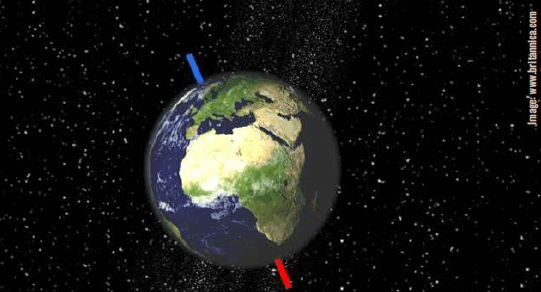 Besides depletion of natural resources,
the Earth is experiencing
climate changes due to exploitation,
as evident in natural disasters that are
now becoming more common. Now,
a new study [published in Geophysical
Research Letters] reveals that the Earth’s
tilt has changed by 31.5 inches (80 cm)
between 1993 and 2010. Humans have
pumped so much groundwater from
Earth that its tilt has been affected.
Between this time period, humans
have sucked out 2,150 gigatons of water
from natural reservoirs. Owing to this
enormous displacement of water, the
Earth’s axis has been affected, scientists
say.
Scientists studied various models
that would cause changes in the Earth’s
rotational pole. They found that it is affected by climate processes like melting
of icecaps and the aforementioned
changes in the distribution of water.
When they added pumped out water to
their models, they discovered that the
model was off by 31 inches. “Earth’s
rotational pole actually changes a lot,”
said the study’s lead author, Ki-Weon
Seo, a geophysicist at Seoul National
University. “Our study shows that
among climate-related causes, the
redistribution of groundwater actually
has the largest impact on the drift of
the rotational pole.” Such changes in
tilt are capable of affecting the seasonal
weather on the planet’s surface. Scientists
now wonder whether shifts of the
rotational pole could cause climate ...
Read full text
Besides depletion of natural resources,
the Earth is experiencing
climate changes due to exploitation,
as evident in natural disasters that are
now becoming more common. Now,
a new study [published in Geophysical
Research Letters] reveals that the Earth’s
tilt has changed by 31.5 inches (80 cm)
between 1993 and 2010. Humans have
pumped so much groundwater from
Earth that its tilt has been affected.
Between this time period, humans
have sucked out 2,150 gigatons of water
from natural reservoirs. Owing to this
enormous displacement of water, the
Earth’s axis has been affected, scientists
say.
Scientists studied various models
that would cause changes in the Earth’s
rotational pole. They found that it is affected by climate processes like melting
of icecaps and the aforementioned
changes in the distribution of water.
When they added pumped out water to
their models, they discovered that the
model was off by 31 inches. “Earth’s
rotational pole actually changes a lot,”
said the study’s lead author, Ki-Weon
Seo, a geophysicist at Seoul National
University. “Our study shows that
among climate-related causes, the
redistribution of groundwater actually
has the largest impact on the drift of
the rotational pole.” Such changes in
tilt are capable of affecting the seasonal
weather on the planet’s surface. Scientists
now wonder whether shifts of the
rotational pole could cause climate ...
Read full text
 For two years since the founding of
TômTex, Uyen Tran has carried
this wallet —an early prototype crafted
from her company's bio-based synthetic
leather— with her everywhere.
The black, subtly shimmering snakeskin
material had gently conformed to
the shape of her credit cards, just like
a well-loved, real leather wallet. More
importantly, it showed no signs of
peeling or cracking.
Even in vegan leathers that purport
to be plant-based, a hefty portion of
the layers, binders, and finishes are
fossil-fuel-based plastics.
The leather alternative by Tôm-
Tex is what’s known in the consumer
products world as a mono-material,
made of 100% chitosan (pronounced
“kai-toe-san”), a biopolymer created
from chitin, the building block for
crustacean shells, mushroom cell walls,
and insect exoskeletons, making it one
of the most abundant biopolymers on
earth. ...
Read full text:
For two years since the founding of
TômTex, Uyen Tran has carried
this wallet —an early prototype crafted
from her company's bio-based synthetic
leather— with her everywhere.
The black, subtly shimmering snakeskin
material had gently conformed to
the shape of her credit cards, just like
a well-loved, real leather wallet. More
importantly, it showed no signs of
peeling or cracking.
Even in vegan leathers that purport
to be plant-based, a hefty portion of
the layers, binders, and finishes are
fossil-fuel-based plastics.
The leather alternative by Tôm-
Tex is what’s known in the consumer
products world as a mono-material,
made of 100% chitosan (pronounced
“kai-toe-san”), a biopolymer created
from chitin, the building block for
crustacean shells, mushroom cell walls,
and insect exoskeletons, making it one
of the most abundant biopolymers on
earth. ...
Read full text:
 Sylvia Nyaga
remembers
living with
her grandfather,
who
was a person
with mobility
challenges. As
a young child,
she did not understand what it meant
for him not to have assistive technology
that would help him around the
house. She later learned that the lack of
assistive technology was hard on him,
and he often had to use a bucket as a
toilet, since he could not use the regular
toilets. With this newly found knowledge,
she set to work on a design that
could be used by people with mobility
challenges. This was the beginning of
Syna consultancy.
Syna Consultancy is a social enterprise
committed to delivering fair and inclusive
sanitation solutions. While their
mandate has transformed over the years,
their major objective is to ensure universal
access to safe and appropriate water
and sanitation, with special emphasis
paid to the needs of underprivileged
communities.
One of their best-selling products
is the UTULAV toilet, an idea that was
born following a chat between the Syna
team and the parents of a disabled child.
Hearing of the challenges with existing
infrastructure, the team began to develop a solution that would help
countless families facing similar challenges
every day.
The UTULAV toilet support frame
includes wheels for mobility. This
compact form is easily disassembled
and light, allowing for easy carrying
and movement. This toilet includes
a simple waste disposal system that
can be used safely and hygienically,
reducing interaction with waste, and
promoting hygienic practices. It also
has an airtight valve to ensure that no
odours are emitted from the waste. The
design has been developed for effectiveness
within informal settlements,
where space is a premium. ...
Visit: atinnovatenow.com
Read full text
Sylvia Nyaga
remembers
living with
her grandfather,
who
was a person
with mobility
challenges. As
a young child,
she did not understand what it meant
for him not to have assistive technology
that would help him around the
house. She later learned that the lack of
assistive technology was hard on him,
and he often had to use a bucket as a
toilet, since he could not use the regular
toilets. With this newly found knowledge,
she set to work on a design that
could be used by people with mobility
challenges. This was the beginning of
Syna consultancy.
Syna Consultancy is a social enterprise
committed to delivering fair and inclusive
sanitation solutions. While their
mandate has transformed over the years,
their major objective is to ensure universal
access to safe and appropriate water
and sanitation, with special emphasis
paid to the needs of underprivileged
communities.
One of their best-selling products
is the UTULAV toilet, an idea that was
born following a chat between the Syna
team and the parents of a disabled child.
Hearing of the challenges with existing
infrastructure, the team began to develop a solution that would help
countless families facing similar challenges
every day.
The UTULAV toilet support frame
includes wheels for mobility. This
compact form is easily disassembled
and light, allowing for easy carrying
and movement. This toilet includes
a simple waste disposal system that
can be used safely and hygienically,
reducing interaction with waste, and
promoting hygienic practices. It also
has an airtight valve to ensure that no
odours are emitted from the waste. The
design has been developed for effectiveness
within informal settlements,
where space is a premium. ...
Visit: atinnovatenow.com
Read full text
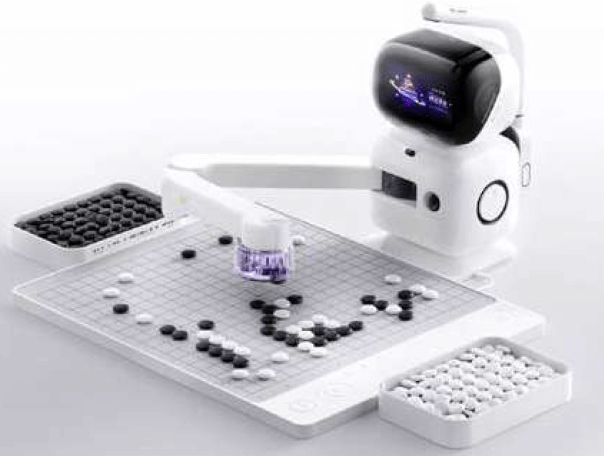 SenseTime, a leading global artificial
intelligence (AI) software
company, has unveiled its latest addition
to its SenseRobot family —the
SenseRobot Go. Specifically designed
for young learners of the game Go,
this innovative product integrates
SenseTime’s cutting-edge AI and
robotic arm technology, allowing users
to practice and play Go on a real
board. This robot offers an immersive
and engaging gaming experience,
featuring a vast library of professional
AI Go exercises, human-to-machine
and online human-to-human gameplay
functions, along with a range of
visual, auditory, and tactile interactions.
This feature-packed product is
an ideal one-on-one intelligent companion
for children, empowering them
to develop critical thinking skills, and
enabling Go AI to reach millions of
households. ...
Read full text
SenseTime, a leading global artificial
intelligence (AI) software
company, has unveiled its latest addition
to its SenseRobot family —the
SenseRobot Go. Specifically designed
for young learners of the game Go,
this innovative product integrates
SenseTime’s cutting-edge AI and
robotic arm technology, allowing users
to practice and play Go on a real
board. This robot offers an immersive
and engaging gaming experience,
featuring a vast library of professional
AI Go exercises, human-to-machine
and online human-to-human gameplay
functions, along with a range of
visual, auditory, and tactile interactions.
This feature-packed product is
an ideal one-on-one intelligent companion
for children, empowering them
to develop critical thinking skills, and
enabling Go AI to reach millions of
households. ...
Read full text
 When you’re stressed, a highcalorie
snack may seem like a
comforting go-to. But this combination
has an unhealthy downside. According
to Sydney scientists, stress combined
with calorie-dense ‘comfort’ food creates
changes in the brain that drive
more eating, boost cravings for sweet,
highly palatable food and lead to excess
weight gain.
A team from the Garvan Institute
of Medical Research found that stress
overrode the brain’s natural response
to satiety, leading to non-stop reward
signals that promote eating more highly
palatable food. This occurred in a part
of the brain called the lateral habenula,
which when activated usually dampens
these reward signals. ...
The researchers discovered that at
the centre of the weight gain was the
molecule NPY, which the brain produces
naturally in response to stress. When
the researchers blocked NPY from activating
brain cells in the lateral habenula
in stressed mice on a high-fat diet,
the mice consumed less comfort food,
resulting in less weight gain.
The researchers next performed a
‘sucralose preference test’ —allowing
mice to choose to drink either water or
water that had been artificially sweetened.
“Stressed mice on a high-fat diet
consumed three times more sucralose
than mice that were on a high-fat diet
alone, suggesting that stress not only
activates more reward when eating but
specifically drives a craving for sweet,
palatable food,” says ...
Read full text:
When you’re stressed, a highcalorie
snack may seem like a
comforting go-to. But this combination
has an unhealthy downside. According
to Sydney scientists, stress combined
with calorie-dense ‘comfort’ food creates
changes in the brain that drive
more eating, boost cravings for sweet,
highly palatable food and lead to excess
weight gain.
A team from the Garvan Institute
of Medical Research found that stress
overrode the brain’s natural response
to satiety, leading to non-stop reward
signals that promote eating more highly
palatable food. This occurred in a part
of the brain called the lateral habenula,
which when activated usually dampens
these reward signals. ...
The researchers discovered that at
the centre of the weight gain was the
molecule NPY, which the brain produces
naturally in response to stress. When
the researchers blocked NPY from activating
brain cells in the lateral habenula
in stressed mice on a high-fat diet,
the mice consumed less comfort food,
resulting in less weight gain.
The researchers next performed a
‘sucralose preference test’ —allowing
mice to choose to drink either water or
water that had been artificially sweetened.
“Stressed mice on a high-fat diet
consumed three times more sucralose
than mice that were on a high-fat diet
alone, suggesting that stress not only
activates more reward when eating but
specifically drives a craving for sweet,
palatable food,” says ...
Read full text:
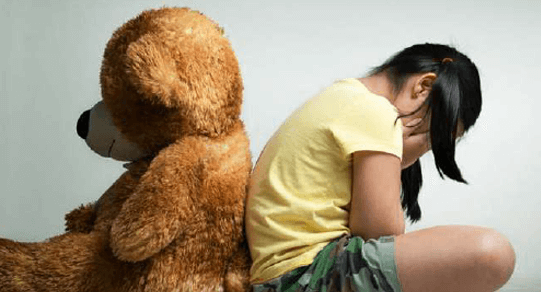 If children and teenagers receive any
help for an anxiety disorder, it's
usually medication — not counseling
— according to a study published in
Pediatrics. ...
As the number of youth with anxiety
disorders has risen continually since
2006, the number of children receiving
psychotherapy has decreased.
“This really shows that the burden of
treating mental health conditions among
patients is growing,” said study author
Laura Chavez, a senior research scientist
at Nationwide Children’s Hospital in
Columbus, Ohio.
“Even when they’re able to navigate
the health care system and visit with
a physician in an office setting, they
may not receive the treatment that they
need,’ she said. There are several possible reasons,
including stigma and a lack of access
to pediatric therapists, according to the
Child Mind Institute. ... This finding
echoes multiple other studies showing
dramatic increases in youth mental
health conditions.
Overall, approximately 5.8 million
children in the U.S. had a diagnosed
anxiety disorder in 2019, according to
the Centers for Disease Control and
Prevention. Last year, the influential
U.S. Preventive Services Task Force recommended
that children as young as 8
be screened for anxiety. While the new
report ends in 2018, it’s possible a rise
in screening could result in even more
children being prescribed medication. ...
Read full text:
If children and teenagers receive any
help for an anxiety disorder, it's
usually medication — not counseling
— according to a study published in
Pediatrics. ...
As the number of youth with anxiety
disorders has risen continually since
2006, the number of children receiving
psychotherapy has decreased.
“This really shows that the burden of
treating mental health conditions among
patients is growing,” said study author
Laura Chavez, a senior research scientist
at Nationwide Children’s Hospital in
Columbus, Ohio.
“Even when they’re able to navigate
the health care system and visit with
a physician in an office setting, they
may not receive the treatment that they
need,’ she said. There are several possible reasons,
including stigma and a lack of access
to pediatric therapists, according to the
Child Mind Institute. ... This finding
echoes multiple other studies showing
dramatic increases in youth mental
health conditions.
Overall, approximately 5.8 million
children in the U.S. had a diagnosed
anxiety disorder in 2019, according to
the Centers for Disease Control and
Prevention. Last year, the influential
U.S. Preventive Services Task Force recommended
that children as young as 8
be screened for anxiety. While the new
report ends in 2018, it’s possible a rise
in screening could result in even more
children being prescribed medication. ...
Read full text:
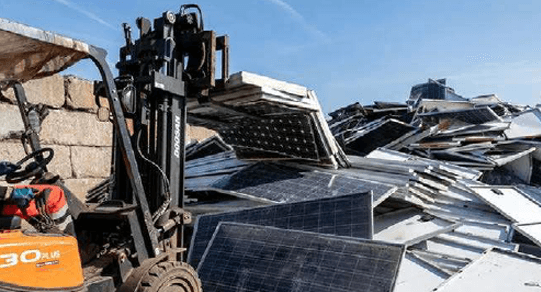 While they are being promoted
around the world as a crucial
weapon in reducing carbon emissions,
solar panels have an average lifespan of
25-30 years. ...
“The world has installed more than
one terawatt of solar capacity. Ordinary
solar panels have a capacity
of about 400W, so if you count both
rooftops and solar farms, there could
be as many as 2.5 billion solar panels,”
says Dr Rong Deng, an expert in solar
panel recycling at the University of
New South Wales in Australia. According
to the British government, there are
tens of millions of solar panels in the
UK. But the specialist infrastructure to
scrap and recycle them is lacking.
Energy experts are calling for urgent
government action to prevent a
looming global environmental disaster.
“It’s going to be a waste mountain
by 2050, unless we get recycling chains
going now,” says Ute Collier, deputy
director of the International Renewable
Energy Agency. “We’re producing more
and more solar panels —which is great
— but how are we going to deal with
the waste?” she asks.
It is hoped a major step will be taken
at the end of June, when the world’s
first factory dedicated to fully recycling
solar panels officially opens in France.
ROSI, the specialist solar recycling company
which owns the facility, in the Alpine
city of Grenoble, hopes eventually
to be able to extract and re-use 99% of
a unit’s components. ...
While they are being promoted
around the world as a crucial
weapon in reducing carbon emissions,
solar panels have an average lifespan of
25-30 years. ...
“The world has installed more than
one terawatt of solar capacity. Ordinary
solar panels have a capacity
of about 400W, so if you count both
rooftops and solar farms, there could
be as many as 2.5 billion solar panels,”
says Dr Rong Deng, an expert in solar
panel recycling at the University of
New South Wales in Australia. According
to the British government, there are
tens of millions of solar panels in the
UK. But the specialist infrastructure to
scrap and recycle them is lacking.
Energy experts are calling for urgent
government action to prevent a
looming global environmental disaster.
“It’s going to be a waste mountain
by 2050, unless we get recycling chains
going now,” says Ute Collier, deputy
director of the International Renewable
Energy Agency. “We’re producing more
and more solar panels —which is great
— but how are we going to deal with
the waste?” she asks.
It is hoped a major step will be taken
at the end of June, when the world’s
first factory dedicated to fully recycling
solar panels officially opens in France.
ROSI, the specialist solar recycling company
which owns the facility, in the Alpine
city of Grenoble, hopes eventually
to be able to extract and re-use 99% of
a unit’s components. ...
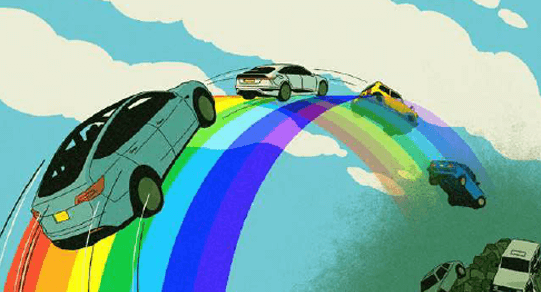 The government (UK) has proposed
a ban on the sale of new petrol and
diesel cars from 2030. The problem with
the initiative is that it seems to be largely
based on conclusions drawn from only
one part of a car’s operating life: what
comes out of the exhaust pipe.
Electric cars have zero exhaust emissions
... but if you zoom out a bit and look
at a bigger picture that includes the car’s
manufacture, the situation is different.
In advance of the Cop26 climate conference
in Glasgow in 2021, Volvo released
figures claiming that greenhouse gas
emissions during production of an electric
car are nearly 70% higher than when
manufacturing a petrol one. The problem
lies with the lithium-ion batteries fitted
currently to nearly all electric vehicles:
they’re absurdly heavy, huge amounts of energy are required to make them, and
they are estimated to last only upwards
of 10 years. It seems a perverse choice
of hardware with which to lead the
automobile’s fight against the climate
crisis. ...
New ‘solid-state’ batteries are being
developed, but they are years away from
being on sale. ... Hydrogen is emerging
as an interesting alternative fuel, even
though we are slow in developing a truly
“green” way of manufacturing it.
But let’s zoom out even further and
consider the whole life cycle of an automobile.
The biggest problem we need
to address in society’s relationship with
the car is the “fast fashion” sales culture
that has been ...
Read full text:
The government (UK) has proposed
a ban on the sale of new petrol and
diesel cars from 2030. The problem with
the initiative is that it seems to be largely
based on conclusions drawn from only
one part of a car’s operating life: what
comes out of the exhaust pipe.
Electric cars have zero exhaust emissions
... but if you zoom out a bit and look
at a bigger picture that includes the car’s
manufacture, the situation is different.
In advance of the Cop26 climate conference
in Glasgow in 2021, Volvo released
figures claiming that greenhouse gas
emissions during production of an electric
car are nearly 70% higher than when
manufacturing a petrol one. The problem
lies with the lithium-ion batteries fitted
currently to nearly all electric vehicles:
they’re absurdly heavy, huge amounts of energy are required to make them, and
they are estimated to last only upwards
of 10 years. It seems a perverse choice
of hardware with which to lead the
automobile’s fight against the climate
crisis. ...
New ‘solid-state’ batteries are being
developed, but they are years away from
being on sale. ... Hydrogen is emerging
as an interesting alternative fuel, even
though we are slow in developing a truly
“green” way of manufacturing it.
But let’s zoom out even further and
consider the whole life cycle of an automobile.
The biggest problem we need
to address in society’s relationship with
the car is the “fast fashion” sales culture
that has been ...
Read full text:
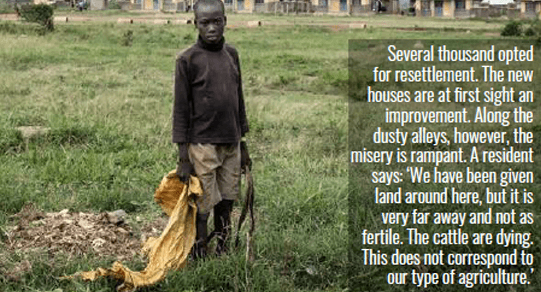 Oil companies plan to pump crude
oil from Lake Albert, Uganda to the
coast of neighbouring Tanzania, with
the goal of producing 1.4bn barrels over
the next two decades. But the pipeline
project has created a human tragedy
for those living in its 900-mile path.
The area around Lake Albert is now
a huge construction site. After years
of discussions between the Ugandan
government and international oil companies,
TotalEnergies of France won the
largest deposit. It has since drilled 400
oil wells, including 100 in the middle
of the Murchison Falls national park, a
haven of biodiversity vital for Uganda’s
tourism industry. The Chinese oil company
CNOOC won the exploitation rights
to a smaller field south of the lake.
Once extracted, the crude oil will
be heated to 50C (120F) and injected into the 900-mile East African Crude
Oil Pipeline (EACOP), heading for the
Tanzanian coast, at a rate of 240,000
barrels a day.
In order to build the pipeline and
other infrastructure, tens of thousands
of Ugandans had to be moved off their
land. They are known as ‘projectaffected
people’, or ‘PAPs’ in TotalEnergies
jargon. Most are subsistence
farmers. On the shores of Lake Albert,
nearly 31,000 people had to abandon
their land. In this part of Africa, land
ownership is often the only bulwark
against poverty.
In many villages, expropriation is
causing human tragedy. Many farmers
have been barred from working their
land ...
Oil companies plan to pump crude
oil from Lake Albert, Uganda to the
coast of neighbouring Tanzania, with
the goal of producing 1.4bn barrels over
the next two decades. But the pipeline
project has created a human tragedy
for those living in its 900-mile path.
The area around Lake Albert is now
a huge construction site. After years
of discussions between the Ugandan
government and international oil companies,
TotalEnergies of France won the
largest deposit. It has since drilled 400
oil wells, including 100 in the middle
of the Murchison Falls national park, a
haven of biodiversity vital for Uganda’s
tourism industry. The Chinese oil company
CNOOC won the exploitation rights
to a smaller field south of the lake.
Once extracted, the crude oil will
be heated to 50C (120F) and injected into the 900-mile East African Crude
Oil Pipeline (EACOP), heading for the
Tanzanian coast, at a rate of 240,000
barrels a day.
In order to build the pipeline and
other infrastructure, tens of thousands
of Ugandans had to be moved off their
land. They are known as ‘projectaffected
people’, or ‘PAPs’ in TotalEnergies
jargon. Most are subsistence
farmers. On the shores of Lake Albert,
nearly 31,000 people had to abandon
their land. In this part of Africa, land
ownership is often the only bulwark
against poverty.
In many villages, expropriation is
causing human tragedy. Many farmers
have been barred from working their
land ...
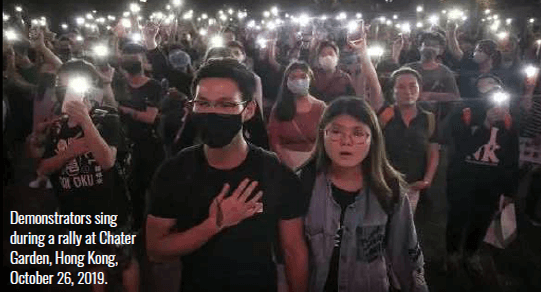 Hong Kong’s government is trying
to ban a song —and get major
tech firms to act as accomplices. The
tune in question is Glory to Hong Kong,
a protest song from 2019. Apparently,
Hong Kong authorities and their Beijing
overlords are not yet satisfied with the
level of repression they’ve already imposed,
which includes absurd extremes,
like jailing authors of children’s books
for sedition.
Books. Songs. They clearly want
to ban anything that might remind
people they have rights. To ban a song,
however, Hong Kong’s authorities
need tech companies to play along,
because, well, this isn’t the 1970s, and
they can’t just send police around to
the record stores to gather up all the
vinyl. The global giants involved in the
streaming and sharing of music —like Apple, Google (including YouTube),
Meta, Twitter, and Spotify— run the
music distribution world today.
So, the Hong Kong government is
seeking an injunction by the High
Court of Hong Kong to ban the broadcasting
and distribution of the song. If
the court issues the injunction, it would
require companies to remove the song
from their online platforms.
And at that point, the tech companies
will have to decide what to do: uphold
freedom of expression or cave into
China’s authoritarian demands.
Obviously, human rights groups and
tech rights groups are strongly urging
the companies to do the former.
They need to take a stand against
the Hong Kong government’s censorship.
...
Hong Kong’s government is trying
to ban a song —and get major
tech firms to act as accomplices. The
tune in question is Glory to Hong Kong,
a protest song from 2019. Apparently,
Hong Kong authorities and their Beijing
overlords are not yet satisfied with the
level of repression they’ve already imposed,
which includes absurd extremes,
like jailing authors of children’s books
for sedition.
Books. Songs. They clearly want
to ban anything that might remind
people they have rights. To ban a song,
however, Hong Kong’s authorities
need tech companies to play along,
because, well, this isn’t the 1970s, and
they can’t just send police around to
the record stores to gather up all the
vinyl. The global giants involved in the
streaming and sharing of music —like Apple, Google (including YouTube),
Meta, Twitter, and Spotify— run the
music distribution world today.
So, the Hong Kong government is
seeking an injunction by the High
Court of Hong Kong to ban the broadcasting
and distribution of the song. If
the court issues the injunction, it would
require companies to remove the song
from their online platforms.
And at that point, the tech companies
will have to decide what to do: uphold
freedom of expression or cave into
China’s authoritarian demands.
Obviously, human rights groups and
tech rights groups are strongly urging
the companies to do the former.
They need to take a stand against
the Hong Kong government’s censorship.
...
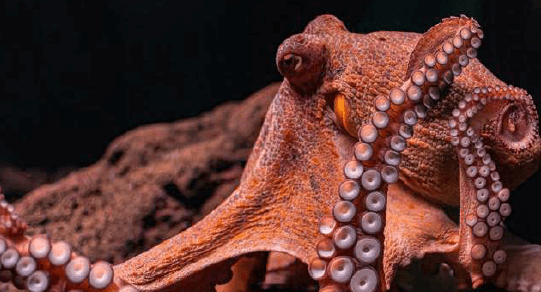 A plan to build the world’s first octopus
farm has raised deep concerns
among scientists over the welfare of
the famously intelligent creatures. The
farm in Spain’s Canary Islands would
raise about a million octopuses annually
for food, according to confidential
documents seen by the BBC. They have
never been intensively farmed and
some scientists call the proposed icy
water slaughtering method “cruel.”
The Spanish multinational behind
the plans denies the octopuses will
suffer. The confidential planning
proposal documents from the company,
Nueva Pescanova, were given
to the BBC by the campaign organisation
Eurogroup for Animals. Nueva
Pescanova sent the proposal to the
Canary Islands’ General Directorate of Fishing, which has not responded to a
BBC request for comment.
Octopuses caught in the wild using
pots, lines and traps are eaten all over
the world, including in the Mediterranean
and in Asia and Latin America.
The race to discover the secret to
breeding them in captivity has been
going on for decades. It’s difficult
as the larvae only eat live food and
need a carefully controlled environment,
but Nueva Pescanova announced
in 2019 that it had made a scientific
breakthrough.
The prospect of intensively farming
octopus has already led to opposition:
Lawmakers in the US state of Washington
have proposed banning the practice
before it even starts. ...
A plan to build the world’s first octopus
farm has raised deep concerns
among scientists over the welfare of
the famously intelligent creatures. The
farm in Spain’s Canary Islands would
raise about a million octopuses annually
for food, according to confidential
documents seen by the BBC. They have
never been intensively farmed and
some scientists call the proposed icy
water slaughtering method “cruel.”
The Spanish multinational behind
the plans denies the octopuses will
suffer. The confidential planning
proposal documents from the company,
Nueva Pescanova, were given
to the BBC by the campaign organisation
Eurogroup for Animals. Nueva
Pescanova sent the proposal to the
Canary Islands’ General Directorate of Fishing, which has not responded to a
BBC request for comment.
Octopuses caught in the wild using
pots, lines and traps are eaten all over
the world, including in the Mediterranean
and in Asia and Latin America.
The race to discover the secret to
breeding them in captivity has been
going on for decades. It’s difficult
as the larvae only eat live food and
need a carefully controlled environment,
but Nueva Pescanova announced
in 2019 that it had made a scientific
breakthrough.
The prospect of intensively farming
octopus has already led to opposition:
Lawmakers in the US state of Washington
have proposed banning the practice
before it even starts. ...
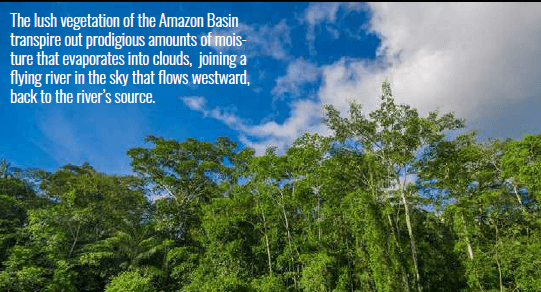 High in the Andes Mountains, the
mighty Amazon River begins. It
trickles from glaciers and oozes from
mountain wetlands. It gains momentum
and volume and feeds into clear streams
and muddy rivers that pass through
high cloud forests and lowland valleys.
The torrents of the waters carry nutrients
through the vast Amazon River
basin, some 4,000 miles across the rest
of the South American continent.
At the same time, in the rainforest
and delta estuaries, another, more
ethereal —but no less essential— river
is forming. Across the Amazon rainforest,
water is being sucked up by plant
roots, transported through their bodies,
and emitted or “transpired” from their
leaves. In the air, this vapor rises and
cools, condensing into clouds. Thus suspended, it becomes a sort of “flying
river” of water vapor, flowing west,
back toward the Andes. Along its own
winding journey, its contents will fall
as precipitation, forming upland rivers,
wetlands, and mountain snow and icepack
to feed, once again, the Amazon. ...
The Amazon rainforest is prized for
its climate-regulating role of absorbing
and sequestering prodigious amounts
of carbon. But it might be the forests’
exhalation of water vapor that has an
even larger impact on climate overall,
through mass-scale cloud formation,
moisture transport, and other largescale
connections of water and weather
cycles. ...
High in the Andes Mountains, the
mighty Amazon River begins. It
trickles from glaciers and oozes from
mountain wetlands. It gains momentum
and volume and feeds into clear streams
and muddy rivers that pass through
high cloud forests and lowland valleys.
The torrents of the waters carry nutrients
through the vast Amazon River
basin, some 4,000 miles across the rest
of the South American continent.
At the same time, in the rainforest
and delta estuaries, another, more
ethereal —but no less essential— river
is forming. Across the Amazon rainforest,
water is being sucked up by plant
roots, transported through their bodies,
and emitted or “transpired” from their
leaves. In the air, this vapor rises and
cools, condensing into clouds. Thus suspended, it becomes a sort of “flying
river” of water vapor, flowing west,
back toward the Andes. Along its own
winding journey, its contents will fall
as precipitation, forming upland rivers,
wetlands, and mountain snow and icepack
to feed, once again, the Amazon. ...
The Amazon rainforest is prized for
its climate-regulating role of absorbing
and sequestering prodigious amounts
of carbon. But it might be the forests’
exhalation of water vapor that has an
even larger impact on climate overall,
through mass-scale cloud formation,
moisture transport, and other largescale
connections of water and weather
cycles. ...

 This line by
Pilot features brilliant G2 gel ink colors,
such as lime, orange, pink & purple, with
matching barrel colors. Now you can go
green at home, school or work.
Fine point. 12-pack.
www.amazon.com
This line by
Pilot features brilliant G2 gel ink colors,
such as lime, orange, pink & purple, with
matching barrel colors. Now you can go
green at home, school or work.
Fine point. 12-pack.
www.amazon.com
 Get rid of single-use plastic baggies and
wraps, and keep all of your food fresh.
Wrap, rinse, reuse. When it’s time to get
new ones, they can be composted
or used as a fire starter.
www.amazon.com
Get rid of single-use plastic baggies and
wraps, and keep all of your food fresh.
Wrap, rinse, reuse. When it’s time to get
new ones, they can be composted
or used as a fire starter.
www.amazon.com

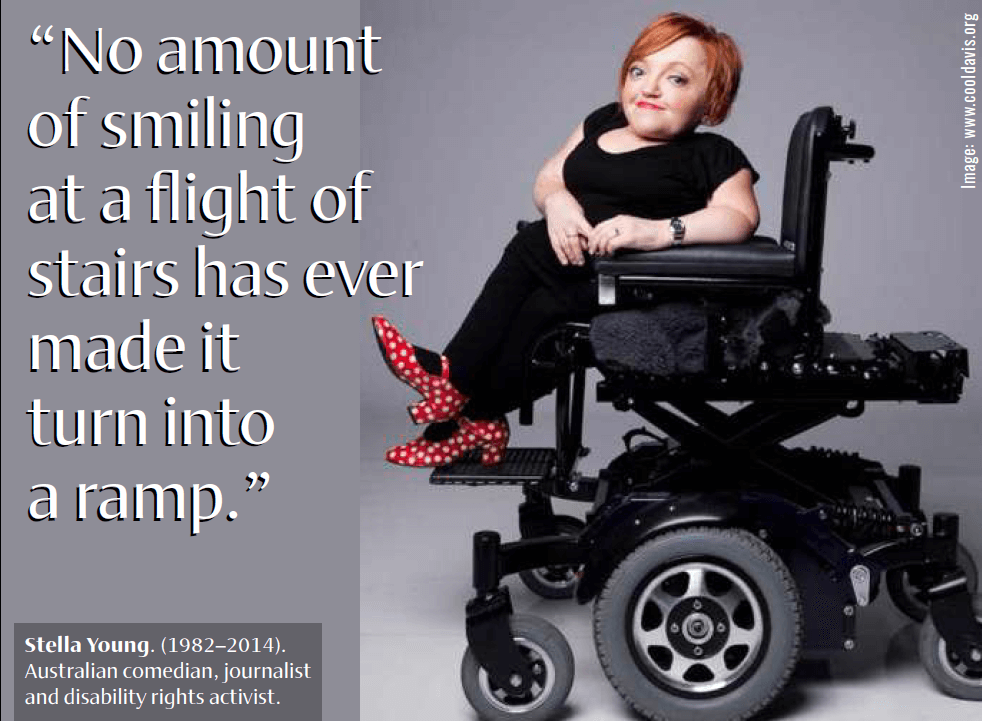 “No amount
of smiling
at a flight of
stairs has ever
made it
turn into
a ramp.”
“No amount
of smiling
at a flight of
stairs has ever
made it
turn into
a ramp.”
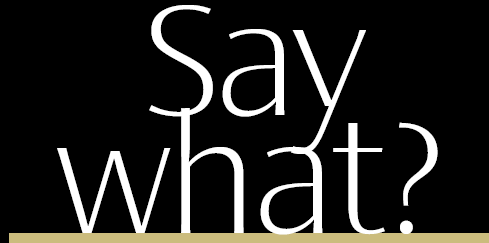
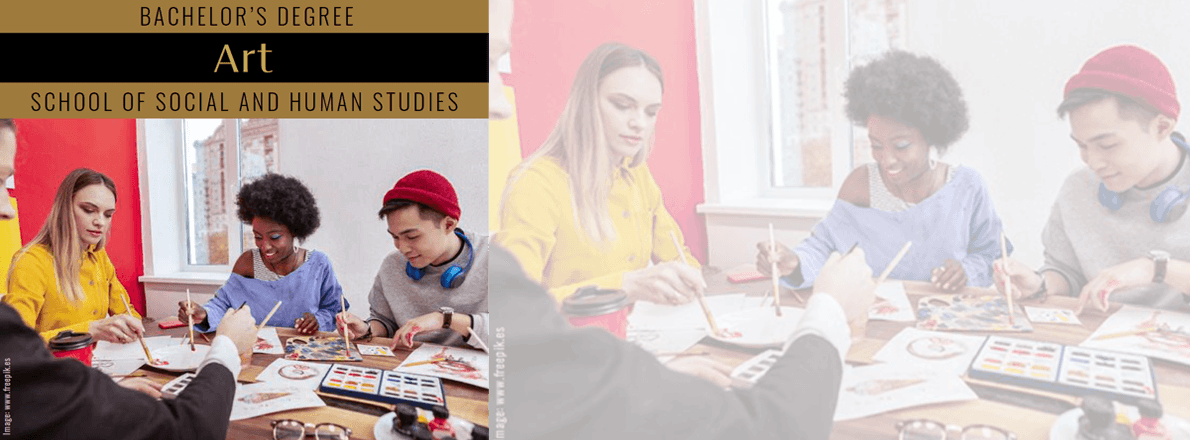 The Bachelor of Art (BA) program
helps students develop and refine
their skills in craftsmanship through
aesthetic expression to expose their
talents to a broader scope, to inspire
them to a greater height of expression,
artistic excellence and exemplary
skills, and to work towards national
and international recognition in the
promotion and development of Art.
The Bachelor of Art program is offered
online via distance learning. After
evaluating both academic record and
life experience, AIU staff working in
conjunction with Faculty and Academic
Advisors will assist students in
setting up a custom-made program,
designed on an individual basis. This
flexibility to meet student needs is
seldom found in other distance learning
programs. Our online program
does not require all students to take
the same subjects/courses, use the
same books, or learning materials.
Instead, the online Bachelor of Art
curriculum is designed individually by
the student and academic advisor. It
specifically addresses strengths and
weaknesses with respect to market
opportunities in the student’s major
and intended field of work. Understanding
that industry and geographic
factors should influence the content
of the curriculum instead of a standardized
one-fits-all design is the
hallmark of AIU’s unique approach
to adult education. This philosophy
addresses the dynamic and constantly
changing environment of working
professionals by helping adult students
in reaching their professional
and personal goals within the scope of
the degree program.
The Bachelor of Art (BA) program
helps students develop and refine
their skills in craftsmanship through
aesthetic expression to expose their
talents to a broader scope, to inspire
them to a greater height of expression,
artistic excellence and exemplary
skills, and to work towards national
and international recognition in the
promotion and development of Art.
The Bachelor of Art program is offered
online via distance learning. After
evaluating both academic record and
life experience, AIU staff working in
conjunction with Faculty and Academic
Advisors will assist students in
setting up a custom-made program,
designed on an individual basis. This
flexibility to meet student needs is
seldom found in other distance learning
programs. Our online program
does not require all students to take
the same subjects/courses, use the
same books, or learning materials.
Instead, the online Bachelor of Art
curriculum is designed individually by
the student and academic advisor. It
specifically addresses strengths and
weaknesses with respect to market
opportunities in the student’s major
and intended field of work. Understanding
that industry and geographic
factors should influence the content
of the curriculum instead of a standardized
one-fits-all design is the
hallmark of AIU’s unique approach
to adult education. This philosophy
addresses the dynamic and constantly
changing environment of working
professionals by helping adult students
in reaching their professional
and personal goals within the scope of
the degree program.
 Atlantic International University is accredited by the Accreditation Service for International
Schools, Colleges and Universities (ASIC). ASIC Accreditation is an internationally
renowned quality standard for colleges and universities. Visit ASIC’s Directory of Accredited
Colleges and Universities. ASIC is a member of CHEA International Quality Group
(CIQG) in the USA, an approved accreditation body by the Ministerial Department of the Home Office
in the UK, and is listed in the International Directory of the Council for Higher Education Accreditation
(CHEA). The University is based in the United States and was established by corporate charter in 1998.
Atlantic International University is accredited by the Accreditation Service for International
Schools, Colleges and Universities (ASIC). ASIC Accreditation is an internationally
renowned quality standard for colleges and universities. Visit ASIC’s Directory of Accredited
Colleges and Universities. ASIC is a member of CHEA International Quality Group
(CIQG) in the USA, an approved accreditation body by the Ministerial Department of the Home Office
in the UK, and is listed in the International Directory of the Council for Higher Education Accreditation
(CHEA). The University is based in the United States and was established by corporate charter in 1998.
 In some cases, accredited colleges
may not accept for transfer courses and degrees
completed at unaccredited colleges, and some
employers may require an accredited degree as
a basis for eligibility for employment. Potential
students should consider how the above may affect
their interests, AIU respects the unique rules and
regulations of each country and does not seek to
influence the respective authorities. In the event
that a prospective student wishes to carry out any
government review or process in regards to his
university degree, we recommend that the requirements
of such are explored in detail with the relevant
authorities by the prospective student as the
university does not intervene in such processes.
AIU students can be found in over 180 countries,
they actively participate and volunteer
in their communities as part of their academic
program and have allocated thousands of service
hours to diverse causes and initiatives. AIU
programs follow the standards commonly used by
colleges and universities in the United States with
regards to the following: academic program
structure, degree issued, transcript, and
other graduation documents.
AIU graduation documents can include
an apostille and authentication from the
US Department of State to facilitate their
use internationally.
In some cases, accredited colleges
may not accept for transfer courses and degrees
completed at unaccredited colleges, and some
employers may require an accredited degree as
a basis for eligibility for employment. Potential
students should consider how the above may affect
their interests, AIU respects the unique rules and
regulations of each country and does not seek to
influence the respective authorities. In the event
that a prospective student wishes to carry out any
government review or process in regards to his
university degree, we recommend that the requirements
of such are explored in detail with the relevant
authorities by the prospective student as the
university does not intervene in such processes.
AIU students can be found in over 180 countries,
they actively participate and volunteer
in their communities as part of their academic
program and have allocated thousands of service
hours to diverse causes and initiatives. AIU
programs follow the standards commonly used by
colleges and universities in the United States with
regards to the following: academic program
structure, degree issued, transcript, and
other graduation documents.
AIU graduation documents can include
an apostille and authentication from the
US Department of State to facilitate their
use internationally.
| Dr. Franklin Valcin Presi den t/Academic Dean |
Dr. José Mercado Chief Executive Officer Chairman of the Board of Trustees |
Ricardo González, PhD Provost |
| Dr. Ricardo Gonzalez Chief Operation Officer and MKT Director |
Linda Collazo Logistics Coordinator |
AIU Tutors Coordinators: Deborah Rodriguez Amiakhor Ejaeta Amanda Gutierrez William Mora Miriam James Admissions Coordinators: Amalia Aldrett Sandra Garcia Junko Shimizu Veronica Amuz Alba Ochoa Jenis Garcia Judith Brown Chris Soto René Cordón Dr. Anderas Rissler Academic Coordinators: Dr. Adesida Oluwafemi Dr. Emmanuel Gbagu Dr. Lucia Gorea Dr. Edgar Colon Dr. Mario Rios Freddy Frejus Dr. Nilani Ljunggren De Silva Dr. Scott Wilson Dr. Mohammad Shaidul Islam |
| Dr. Miriam Garibaldi Vice provost for Research |
Carolina Valdes Human Resource Coordinator |
|
| Dr. Ofelia Miller Director of AIU |
Carlos Aponte Teleco mmunications Coordinator |
|
| Clara Margalef Director of Special Projects of AIU |
David Jung Corporate/Legal Counsel |
|
| Juan Pablo Moreno Director of Operations |
Bruce Kim Advisor/Consultant |
|
| Paula Viera Director of Intelligence Systems |
Thomas Kim Corporate/ Accounting Counsel |
|
| Felipe Gomez Design Director / IT Supervisor |
Maricela Esparza Administrative Coordinator |
|
| Kevin Moll Web Designer |
Chris Benjamin IT and Hosting Support |
|
| Daritza Ysla IT Coordinator |
Maria Pastrana Accounting Coordinator |
|
| Daritza Ysla IT Coordinator |
Roberto Aldrett Communications Coordinator |
|
| Nadeem Awan Chief Programming Officer |
Giovanni Castillo IT Support |
|
| Dr. Edward Lambert Academic Director |
Antonella Fonseca Quality Control & Data Analysis |
|
| Dr. Ariadna Romero Advisor Coordinator |
Adrián Varela Graphic Design |
|
| Jhanzaib Awan Senior Programmer |
Vanesa D’Angelo Content Writer |
|
| Leonardo Salas Human Resource Manager |
Jaime Rotlewicz Dean of Admissions |
|
| Benjamin Joseph IT and Technology Support |
Michael Phillips Registrar’s Office |
|
| Rosie Perez Finance Coordinator |
||
 The School of Business and Economics
allows aspiring and practicing
professionals, managers, and entrepreneurs
in the private and public sectors
to complete a self paced distance
learning degree program of the highest
academic standard.
The ultimate goal is to empower
learners and help them take advantage
of the enormous array of resources
from the world environment in order
to eliminate the current continuum of
poverty and limitations.
Degree programs are designed for
those students whose professional experience has been in business,
marketing, administration, economics,
finance and management.
The School of Business and Economics
allows aspiring and practicing
professionals, managers, and entrepreneurs
in the private and public sectors
to complete a self paced distance
learning degree program of the highest
academic standard.
The ultimate goal is to empower
learners and help them take advantage
of the enormous array of resources
from the world environment in order
to eliminate the current continuum of
poverty and limitations.
Degree programs are designed for
those students whose professional experience has been in business,
marketing, administration, economics,
finance and management.
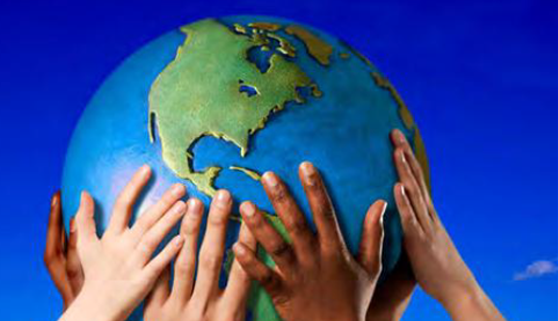 The School of Social and Human Studies
is focused on to the development of
studies which instill a core commitment
to building a society based on social and
economic justice and enhancing opportunities
for human well being.
The founding principles lie on the
basic right of education as outlined
in the Declaration of Human Rights.
We instill in our students a sense of
confidence and self reliance in their
ability to access the vast opportunities
available through information channels,
the world wide web, private, public,
nonprofit, and nongovernmental organizations in an ever expanding
global community.
Degree programs are aimed towards
those whose professional life has been
related to social and human behavior,
with the arts, or with cultural studies.
The School of Social and Human Studies
is focused on to the development of
studies which instill a core commitment
to building a society based on social and
economic justice and enhancing opportunities
for human well being.
The founding principles lie on the
basic right of education as outlined
in the Declaration of Human Rights.
We instill in our students a sense of
confidence and self reliance in their
ability to access the vast opportunities
available through information channels,
the world wide web, private, public,
nonprofit, and nongovernmental organizations in an ever expanding
global community.
Degree programs are aimed towards
those whose professional life has been
related to social and human behavior,
with the arts, or with cultural studies.
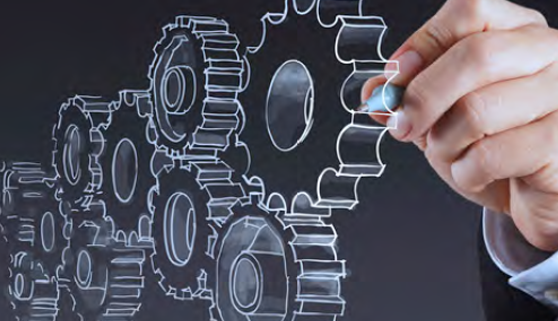 The School of Science and Engineering
seeks to provide dynamic, integrated,
and challenging degree programs
designed for those whose experience
is in industrial research, scientific production,
engineering and the general
sciences. Our system for research and
education will keep us apace with the
twenty-first century reach scientific
advance in an environmentally and
ecologically responsible manner to allow
for the sustainability of the human
population. We will foster among our
students a demand for ethical behavior,
an appreciation for diversity, an understanding
of scientific investigation, knowledge of design innovation, a
critical appreciation for the importance
of technology and technological change
for the advancement of humanity.
The School of Science and Engineering
seeks to provide dynamic, integrated,
and challenging degree programs
designed for those whose experience
is in industrial research, scientific production,
engineering and the general
sciences. Our system for research and
education will keep us apace with the
twenty-first century reach scientific
advance in an environmentally and
ecologically responsible manner to allow
for the sustainability of the human
population. We will foster among our
students a demand for ethical behavior,
an appreciation for diversity, an understanding
of scientific investigation, knowledge of design innovation, a
critical appreciation for the importance
of technology and technological change
for the advancement of humanity.
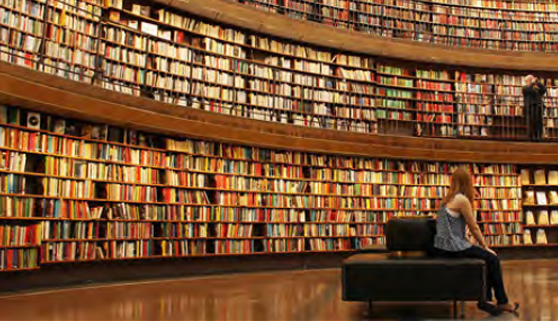 With access to a global catalog created and maintained collectively by more than
9,000 participating institutions, AIU students have secured excellent research
tools for their study programs.
With access to a global catalog created and maintained collectively by more than
9,000 participating institutions, AIU students have secured excellent research
tools for their study programs.